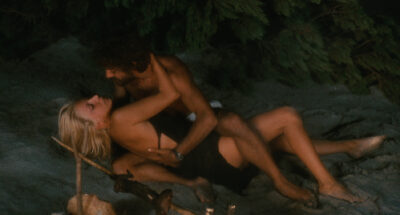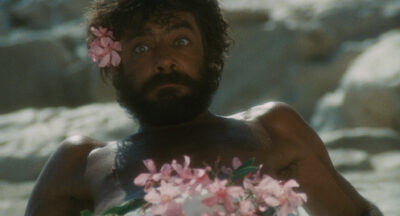Alan Rudolph’s ‘Choose Me‘ Special 4K Restoration Screening Tribute to Bob Laemmle with costars Keith Carradine, Lesley Ann Warren, and producer David Blocker in person April 3.
Laemmle Theatres and the Anniversary Classics Series present a special 4K restoration screening of writer-director Alan Rudolph’s 1984 comedy-drama fable ‘Choose Me‘ as a tribute to the late Bob Laemmle, owner of Laemmle Theatres, who died in January. The film screens Thursday, April 3 at the historic Royal Theatre in West Los Angeles at 7:00 P.M. Costars Keith Carradine and Lesley Ann Warren will appear in person for a Q&A, joined by producer David Blocker. Bob Laemmle was a long-time supporter of Alan Rudolph and ‘Choose Me’ notably had a lengthy run of several months at the Royal in 1984 and 1985.
Alan Rudolph has been in the forefront of the American indie movement since his breakout arthouse hit ‘Welcome to L.A.’ in 1976. As a protégé of Robert Altman, he specializes in romanticism and fantasy with quirky characters. Set mostly in a nocturnal Los Angeles, ‘Choose Me‘ is essentially a lyrical roundelay among five characters: Nancy (Genevieve Bujold), a radio psychologist who goes by the nom de radio “Dr. Love” and dispenses advice to the lovelorn but is maladjusted herself; Eve (Lesley Ann Warren), a former sex worker who owns a bar in a seedy neighborhood; Mickey (Keith Carradine), a released mental patient who may still be quite mad; Pearl (Rae Dawn Chong), an alcoholic aspiring poet; and her wayward husband Zack (Patrick Bauchau). Working on a low-budget, Rudolph achieves high style collaborating with cinematographer Jan Kiesser and production designer Steven Legler and a soundtrack of soulful late-night jazz for the noirish atmospherics.
Critics embraced the film, with Vincent Canby in the New York Times noting how Rudolph features Los Angeles “as much of fairy-tale town as the Emerald City. It’s this quality that makes ‘Choose Me‘ an adult fable of expressive charm.” Janet Maslin, also in the Times, called the characters “garrulous, love-starved loners,” and praised the film “as free-flowing meditation on love, commitment, jealousy, radio call-in shows and just about anything that comes to mind.” Roger Ebert called it “an audaciously intriguing movie…about the endless surprise of human nature.” The Washington Post cited it as “a movie of manners leavened with sophisticated farce…locates the searching quality of contemporary sexual attitudes as well as any this year.” Pauline Kael noted the comedy-fantasy quality, calling it “crazy bananas,” and “in a magical, pseudo-sultry way — it seems to be set in a poet’s dream of a red-light district.”
Our guests have all enjoyed lengthy show business careers, and among their highlights are Academy Award recognition for both Keith Carradine (Best Song Oscar, “I’m Easy” from 1975’s Nashville) and Lesley Anne Warren (Best Supporting Actress nomination, 1982’s ‘Victor, Victoria’). Warren has had an extensive career on stage, screen, and television, including TV’s ‘Cinderella’ and ‘Desperate Housewives’; memorable movie performances in ‘Clue’ and ‘Life Stinks’; and she gave a Golden Globe-nominated performance (among multiple Globe nominations and one win through the years) in Alan Rudolph’s ‘Songwriter’ in 1984.
Carradine has enjoyed a more than five decades career since his debut in Robert Altman’s ‘McCabe & Mrs. Miller’ in 1971, appeared memorably on Broadway in ‘Will Roger’s Follies,’ and collaborated with Rudolph several times, including ‘Welcome to L.A.,’ ‘The Moderns,’ and ‘Mrs. Parker and the Vicious Circle.’ Notably, both Warren and Carradine are still active in entertainment with numerous projects.
David Blocker has produced several Rudolph films: ‘Choose Me,’ ‘Trouble in Mind,’ ‘The Moderns’ (those three with co-producer Carolyn Pfeiffer), ‘Made in Heaven,’ and ‘Equinox.’ His numerous works in television garnered an Emmy for the TV movie ‘Don King: Only in America’ (1997).





